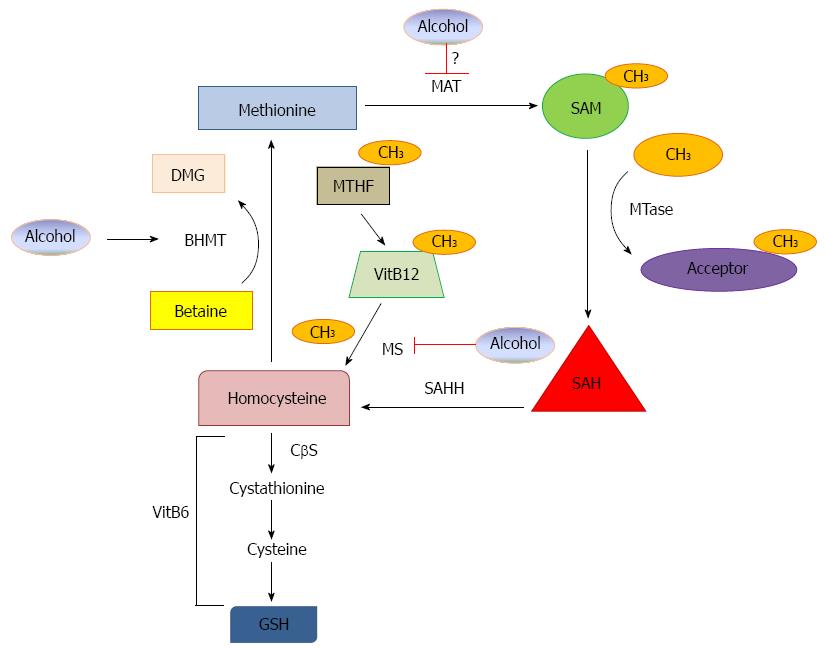Copyright
©2014 Baishideng Publishing Group Inc.
World J Gastroenterol. Sep 28, 2014; 20(36): 12908-12933
Published online Sep 28, 2014. doi: 10.3748/wjg.v20.i36.12908
Published online Sep 28, 2014. doi: 10.3748/wjg.v20.i36.12908
Figure 1 S-adenosylmethionine is produced from methionine by methionine adenosyltransferase.
After donating its methyl group, S-adenosylmethionine (SAM) is converted to S-adenosylhomocysteine (SAH), which is then converted to adenosine and homocysteine by S-adenosylhomocysteine hydrolase (SAHH). Homocysteine is used to regenerate methionine or to produce glutathione (GSH). The vitamin B6 dependent transsulfuration pathway produces GSH via reduction of homocysteine to cystathionine using cystathionine beta synthase (CβS), which can then be further metabolized to cysteine and GSH. Regeneration of methionine from homocysteine occurs by two pathways. The folate-dependent pathway regenerates methionine from homocysteine via transfer of a methyl group from N5-methyltetrahydrofolate (MTHF) to vitamin B12, which is then transferred to homocysteine by methionine synthase (MS) to form methionine. The second pathway is folate independent and uses betaine as a substrate for methionine synthesis from homocysteine via betaine homocysteine methyltransferase (BHMT). Alcohol may affect methionine metabolism via three mechanisms: alcohol inhibits MS, alcohol increases BHMT as a compensatory effect and alcohol may inhibit MAT activity, but this is still controversial.
- Citation: Williams JA, Manley S, Ding WX. New advances in molecular mechanisms and emerging therapeutic targets in alcoholic liver diseases. World J Gastroenterol 2014; 20(36): 12908-12933
- URL: https://www.wjgnet.com/1007-9327/full/v20/i36/12908.htm
- DOI: https://dx.doi.org/10.3748/wjg.v20.i36.12908









